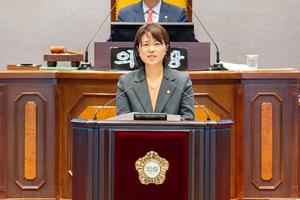 |
PSY, BTS, Blackpink: some of the most famous celebrities in the world are from South Korea. There is no doubt that Hallyu or the “Korean Wave” has taken over the world. Due to this recent surge in popularity, there has also been a rapid growth in the Korean-learning population. According to the U.S. Modern Language Association, the number of university students enrolled in Korean almost doubled between 2006 and 2016, the biggest increase for any language with over a thousand students. Further evidence of the language’s popularity can be found in the number of takers of the Test for Proficiency in Korean (TOPIK): a total of 264,842 took the TOPIK in 2018, up 77 percent from 2010. Let’s take a moment to examine the Korean language from the perspective of the learners.
Hangul is special on many fronts? every year, Koreans celebrate its creation on October 9th. Hangul was made by a man: King Sejong the Great of the Joseon dynasty. Before its introduction, Chinese characters were used in the Korean language and were difficult to learn. This guarantees only a handful of elites with literacy skills. Saddened by the widespread illiteracy and worsened social division, King Sejong pushed for the creation of an easier and more convenient script: Hangul (Korean). He alone created the Korean alphabet in 1443; then, with the help of palace scholars, he wrote a document describing a native script for the Korean language: Hunminjeongeum.
Furthermore, Hangul is unusually clear and consistent for a living language's script. It is a cross between an alphabet and a syllabary, so the symbols reflect the individual sounds in each word, but are also assembled into clear syllabic blocks: many scripts, like English, lack clarity in sounds, syllables, or both.
If these learners come to appreciate these unique aspects of King Sejong's greatest achievement, that will be a fitting send-off to our annual celebration of the language.
위대한 문자, 한글의 재발견
2012년 싸이의 강남스타일로부터 최근 미국 빌보드 차트의 최정상에 위치한 방탄소년단, 블랙핑크까지 한류열풍을 이끌어가고 있다. 이러한 한류 급상승으로 인해 한국어 학습 인구도 급속히 증가했다. 미국 현대 언어 협회에 따르면 한국어 강좌에 등록한 대학생 수는 2006년부터 2016년 사이 거의 두 배로 증가했다고 보도했다. 한국어 능력 시험 응시자 수도 2010년에 비해 77%가 증가한 총 26만5000명이 2018년에 응시했다.
그렇다면 다른 언어와 차별화되는 한국어의 특별한 점은 무엇일까?
첫 번째로는, 수백, 수천 년에 걸쳐 발달된 언어 기호, 문자들과 달리 한글은 한 사람에 의해 창제된 점이다.
한글 도입 전에는 어렵고 복잡한 한자의 상용으로 소수의 특권계층들만 문해력을 가지고 있었기에 세종대왕은 높은 문맹률과 사회 분열의 악화를 해결하고자 쉽고 편리한 언어인 한글을 만들 것을 촉구했다.
세종대왕은 1443년에 혼자의 힘으로 한글을 만들었고, 1446년 집현전 학자들이 세종의 지시로 한글설명서인 <훈민정음 해례본> 집필에 참여했다.
무엇보다 한국어는 세계에서 가장 논리적인 글쓰기 체계로 여겨지고 있다. 하버드 대학교수 Edwin O. Reischauer와 JK Fairbank는 “한글은 어느 나라에서나 일반적으로 사용되는 글쓰기, 언어 중 가장 과학적이고 논리적인 체계일 것입니다"라고 했다.
한글은 자음과 모음을 조합하여 소리를 반영하고 문자에 따라 정확히 발음될 수 있다. 한글날이 국가기념일로 채택될 만큼 한글은 대한민국의 자랑이며 세종대왕의 백성을 사랑하는 마음으로 만든 훈민정음의 의미를 잊지말고 감사하자.
김예은 강남포스트 학생기자 webmaster@ignnews.kr






